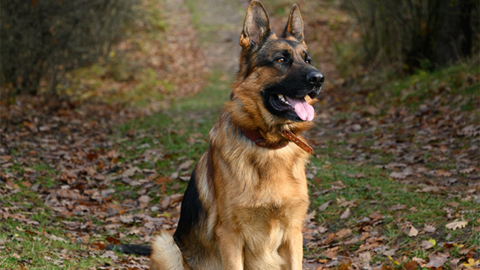No one wants to see their dog in pain. You feel helpless and don’t know what to do. This is especially true when it comes to hip dysplasia in dogs.
Most large breed dog owners have heard of hip dysplasia, but don’t know anything specific. If not treated properly, this scary condition can have negative effects on your pet’s happiness and longevity.
It’s true that large dogs are much more likely to develop this disease than small dogs, but it’s still possible for them to be affected. All dog owners should know the signs, symptoms, and treatment options for hip dysplasia.
What is Hip Dysplasia?
Canine hip dysplasia (CHD), is a common skeletal disease often found in large dog breeds. It’s also found in smaller breeds, and even puppies as young as three months can receive a diagnosis.
When working properly, the hip joint functions as a ball and socket. If you’re unfamiliar with what this means, it’s just a way of saying that a rounded part of one bone moves in the concave surface of the connecting bone.
This type of joint allows the most freedom and mobility of any other joint connection.
Hip dysplasia occurs when there’s a problem with the hip joint connection. In some cases, some dogs’ ball and socket hip joints don’t fit together right and the bones grind against each other incorrectly.
It can be very painful for your dog. Over time, this causes the bones to deteriorate, and eventually, the affected hip joint won’t be able to function at all.
Genetics and Hip Dysplasia
Genetics plays a large role in hip dysplasia. It’s common to be passed down from one generation to the next. A dog with hip dysplasia has about a 25 percent chance of passing it down to their puppies.
Even though it’s a genetic disease, environmental factors can cause it to worsen. A rapid growth rate, damaging exercise, and your dog’s diet can cause this genetic condition to worsen.
Most Affected Dog Breeds

All dogs are at risk, but canine hip dysplasia shows up more often in certain breeds. Because it’s a genetic condition, it gets passed down from adult dogs to their offspring.
Larger and giant breed dogs are more likely to develop the condition than smaller dogs. This is because of their different growth rates.
When buying from a breeder, you can ask what screening tests they’ve performed. There are tests available that can predict whether or not a dog will develop hip dysplasia.
Since some large dog breeds are at a higher risk than others, having a breeder run some tests will help you know what to expect. They should also show you the dog’s family history.
These are a few of the most affected dog breeds.
- Great Danes
- Saint Bernards
- Boxers
- Golden Retrievers
- Australian Shepards
- Mastiffs
- German Shepards
- Labradors
- Rottweilers
- Pitbulls
Types of Hip Dysplasia
Most times this developmental disease doesn’t show signs until a dog is well into adulthood. That doesn’t mean it can’t affect puppies.
Many experts believe that there are two different types of hip dysplasia. They divided them into two separate categories because the symptoms can be very different.
Knowing what to look for at what times in your dog’s life can make a huge difference.
Juvenile hip dysplasia occurs in dogs younger than 19 months. A puppy with a genetic predisposition for hip dysplasia has functioning hip joints when born.





